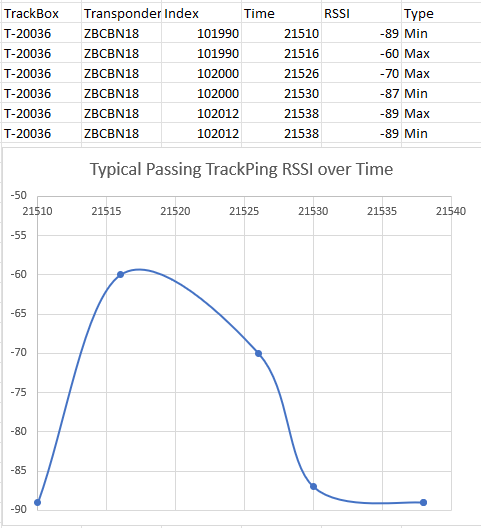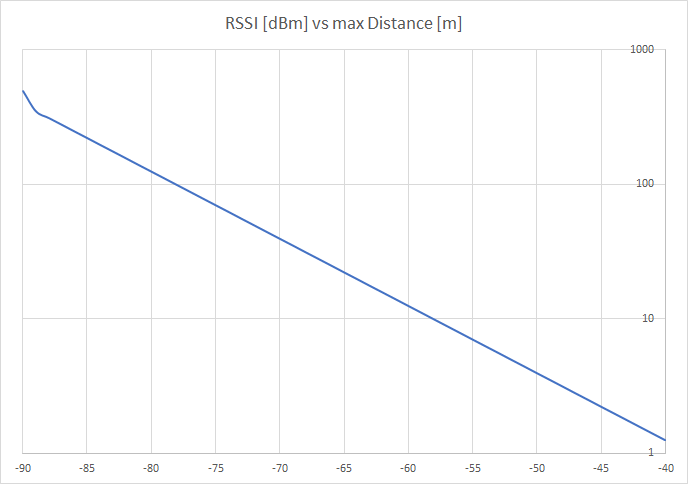Track Boxes use a Protocol based on simple HTTP communication, this was a design choice to optimise battery life of the devices.
For third-party platforms looking to retrieve data from Track Boxes we recommend using the REST API to load passing and status data since Track Boxes can only send data to a single endpoint.
TrackPing Call
TrackBoxes do a plain HTTP-POST (no HTTPs*) to push their box location and TrackPing data to your server.
TrackBox expects a HTTP-200 reply if your server was able to receive the data. As long as it does not receive a HTTP-200 reply, the TrackPing data will be stored and retried endlessly every 10 seconds. If your server replies HTTP-503 "Service Unavailable" the next call will be delayed for one full minute.
URL/Forwarding
Your server can:
- Be directly called by a track box. The URL of this must be configured on the Track Box manually, check how to Configure Track Boxes. The base part includes every character up to and including the "?". It can be a maximum of 89 characters including the "?".
- Be called by our server in a simple call forwarding scheme. This is used if the data should also be available for time keeping purposes. The user must configure forwarding in RR12 timing module. Be aware, that a HTTP 503 reply to our server will just delay the retry of the current call from our server to yours using expontial backoff. New data from that box and data from other boxes will still be forwarded immediately. If a call is repeatedly answered with a 503 status code for ~24 hours (~30 calls), it will be droped by our server.
Typical Call with moving position and TrackPings
/trackping?v=2&custId=10000&boxId=T-20034&boxType=PTrack&boxName=NikiasV10EU%5FTESTBOX&boxTime=210827T110003Z&boxPos=M,49.05802,008.47133,105&index=1&count=10&dataIndex=0&auth=13953 ZCTAA66;22;-40;15;92832;;;;20;-90;\r ZCTAA55;22;-42;19;157302;;;;18;-80;\r ZCTAA53;22;-53;15;113108;;;;17;-77;\r ZCTAA62;22;-42;21;91281;;;;16;-76;\r ZBAAA48;15;-71;5;80109;;;;13;-77;\r ZCTAA66;22;-50;15;92832;;;;11;-70;\r ZCTAA55;22;-42;19;157302;;;;10;-76;\r ZCTAA53;22;-63;15;113108;;;;9;-70;\r ZCTAA62;22;-42;21;91281;;;;6;-50;\r ZBAAA48;15;-71;5;80109;;;;3;-77;\r \r
HTTP Post Parameters
| v |
required |
protocol version (currently 2). |
|
| custId |
required |
Customer ID - can be set by the customer to any 6 digit ID. Will normaly be his rr customer ID. |
|
|
boxId |
required |
Serial number of the calling device including the prefix for hardware type. TrackBoxes start at T-20000. |
|
| boxType | optional | Type of hardware that generated this data. Possible values are {ATrack, PTrack, Timing}. Defaults to ATrack if omitted. |
|
| boxName | optional |
Name of the box. Standard names could be START, FINISH, SPLIT, 5K, 10K, HALFM ... can be configured by user. |
|
|
boxTime |
required |
Current time of TrackBox in the moment of calling the http post. |
|
|
boxPos |
required |
Flag,Latitude,Longitude,Altitude of the Box at the moment of calling the HTTP-POST boxPos=U boxPos=S,49.01469,008.52240 boxPos=M,49.01469,008.52240,226 boxPos=T,49.01469,008.52240,226 boxPos=X,49.01469,008.52240,226
Flag: String indicating different information about this trackping GPS location: |
|
| cell | optional |
Current cell ID of TrackBox. Can be omitted if GPS position is available. |
|
|
lac |
optional |
Current network area code of TrackBox. Can be omitted if GPS position is available. |
|
|
index |
required |
Index of this call. Restarts from 1 when Track Box boots. Counts up with every call that a box tries to post to a server (even if then the call is not successful - eg returns HTTP 200). Can be used to reset a "file" logic on server and gaps in index indicate that there have been unsuccessful calls. |
|
| count |
required |
Number of Trackpings in this call | |
| dataIndex | optional | Index of first trackPing in this call. Resets to 0 on reboot. Will be omitted if count==0. Will always be last calls dataIndex + count and unique during runtime of a TrackBox. This can be very usefull to identify copies of data in the case that the box repeats data in a new call because it did not receive an HTTP 200 on the last call. Starts with dataIndex=1 on the first call after boot and first call after change of TrackCallPingURL or CustomerID. | |
| auth | optional | Key to authenticate that the calling box is genuine RACE RESULT equipment. Please contact RACE RESULT for further information. |
HTTP Post Body TrackPing Record
Multiple TrackPings of a transponder are reduced to one TrackPing record. See data reduction algorithm below for more details. Every line represents one TrackPing record and is delimited by a <carriage return>. The last is always an empty line with one <carriage return>. This indicates the end of the call and is the only content sent in an empty TrackPing call.
Each row seperated by semi-colon represents one data field. Data fields can be empty meaning that they default to 0 if they are numeric.
[transponderId];[peakDiffTime];[peakRSSI];[hits];[peakIndex];[flags];[latitudeDiff];[longitudeDiff];[minDiffTime];[minRSSI];[orderID]\r
Data fields:
|
transponderId |
required | Unique Transponder Identifier | |
|
peakDiffTime |
required |
Seconds between the moment of peak RSSI and current boxTime. The higher the value, the more in the past. |
|
| peakRSSI |
required |
RSSI value at peak signal strength in dBm (a value of -55 means -55dBm). |
|
|
hits |
required |
Counter for number of TrackPings collected for this set of data. |
|
|
peakIndex |
optional |
TrackPingIndex of the TrackPing at peak RSSI. This index is counted up and stored inside transponder for every TrackPing sent out. It is unique per transponder and can help to identify unique TrackPings received by multiple TrackBoxes. | |
|
positionFlag |
optional |
Char indicating position information about the Box at the time of recording this TrackPing record |
|
|
peakLatitudeDiff |
optional |
Latitude of TrackBox at the moment of receiving the peak RSSI TrackPing relative to boxPos in 1/100000 of a degree. The more positive the value, the more the TrackPing position was to the north of current boxPos. To get the true latitude of this TrackPing you need to calculate lat = boxPos.latitude + peakLatitudeDiff/100000. | |
|
peakLongitudeDiff |
optional |
Longitude of TrackBox at the moment of receiving the peak RSSI TrackPing relative to boxPos in 1/100000 of a degree. The more positive the value, the more the TrackPing position was to the east of current boxPos. To get the true latitude of this TrackPing you need to calculate lon = boxPos.longitude + peakLongitudeDiff/100000. |
|
|
minDiffTime |
optional |
Seconds between the moment of minimum RSSI and current boxTime. The higher the value, the more in the past. To get the true minimum time of this TrackPing record you need to calculate minTime = boxTime - minDiffTime. |
|
|
minRSSI |
optional |
RSSI value at minimum signal strength in dBm (a value of -55 means -55dBm). |
|
| OrderID | optional | orderID of a Passive Passing |
Optional values can be left empty, but semicolons must always be present to assure future version compatibility. A typical case would be data from a non moving timing system with flags and all following values missing.
HTTP Post Responce Body
A server can call commands on the box by putting them into the HTTP Post Response Body. See status call documentation for formating and possible commands.
Example (Stationary Timing System):
[transponderId];[peakDiffTime];[peakRSSI];[hits];
/trackping?v=2&custId=012345&boxId=D-5061&boxType=Timing&boxName=Start&boxTime=171024T144243Z&boxPos=S,49.01464,008.52243&count=2 224;62.345;-63;55;;;;;;\r 3465;22.123;-64;76;;;;;;\r \r
Example (Moving->Traveling TrackBox):
/trackping?v=2&custId=012345&boxId=T-20061&boxName=test&boxTime=171024T144243Z&boxPos=M,49.01469,008.52240,226&count=4 ZBAAA48;12;-34;6;79834;M;1;-1;19;-40\r ZCTAA55;12;-44;18;156766;M;1;-1;15;-60\r ZCTAA62;16;-72;15;90739;T;1;-1;11;-80\r ZCTAA53;13;-77;5;112570;T;1;-1;8;-85\r \r
Example (Moving TrackBox, no new GPS fix at the begining)
/trackping?v=2&custId=012345&boxId=T-20061&boxName=test&boxTime=171024T144219Z&boxPos=M,49.01470,008.52239,225&count=7 ZCTAA66;24;-45;31;92226;X;-10;;18;-50\r ZCTAA55;23;-33;31;156696;X;-10;;16;-40\r ZCTAA53;24;-45;39;112501;X;-10;;13;-60\r ZCTAA62;24;-46;40;90675;X;-10;;13;-50\r ZBAAA48;23;-41;15;79799;X;-10;;11;-45\r ZCTAA66;9;-18;17;92254;M;;;9;-18\r ZCTAA55;10;-8;12;156723;M;;;8;-28\r \r
Example (Passive TrackBox, no GPS)
http://rrsproxy.raceresult.com:48080/v1/trackping?v=2&custId=10000&boxId=T-20003&boxTime=200129T110044Z&boxPos=U&cell=B876&lac=118D703&index=603&count=8&auth=04883 8787;1.7;-55;3;;U;;;;;12345\r 8788;1.6;-55;2;;U;;;;;12345\r 8789;1.6;-55;2;;U;;;;;12345\r 8790;1.5;-55;3;;U;;;;;12345\r 8791;1.5;-55;2;;U;;;;;12345\r 8792;1.4;-55;3;;U;;;;;12345\r 8793;1.4;-55;2;;U;;;;;12345\r 8794;1.3;-55;2;;U;;;;;12345\r \r
Example (empty call):
/trackping?v=2&custId=012345&boxId=T-20061&boxName=test&boxTime=171024T144245Z&boxPos=M,49.01469,008.52240,226&count=0 \r
HTTP Post Header
POST HTTP/1.1
Accept: */*
User-Agent: QUECTEL_MODULE
Connection: Keep-Alive
Content-Type: application/x-www-form-urlencoded
*HTTPS/AUTH Parameter
HTTPs is no option for multiple reasons:
Plain HTTP is allowed by most networks around the world.
HTTPs would need additional negotiation leading to increased battery drain. TrackBoxes only have limited capacity and we want it to run for 3 days. It completely shuts down its communication, as long as it is not transmitting anything. For placing a call it connects to the network and disconnect within 100ms again. Communication is what costs energy, it must be done as quick as possible.
Furthermore: Whats missing in this diagram, is that one also needs to contact the certifying third party server to verify the certificate.
Furthermore HTTPs does not really give us a big benefit as it is actually not authenticating the calling client, but your server. Encryption would be nice, but the data is not really worth anything without context.
We need to make sure not to open up the server for everyone to call and push data. Thats why you can authenticate the calling device using the auth parameter. Contact RACE RESULT to obtain the public key and algorithm with which you check wether the call is coming from a genuine RACE RESULT device or not.
Interpreting RSSI Values
Passive Passing
Typical Values
-40dBm for a very close by Transponder
-80dBm for a barely detected Transponder
Active TrackPing
Typical Values
-40dBm or better, for a transponder very close by
-90dBm for a barely detected transponder
Data Reduction Algorithm
To reduce the amount of data, the TrackBox does the following with each TrackPing it receives:
- If transponder unknown, create a new entry in internal short term list with minRSSI=peakRSSI both set to the first RSSI received
- If transponder known and new RSSI < minRSSI -> overwrite minRSSI and minDiffTime
- If transponder known and new RSSI >= peakRSSI -> overwrite peakRSSI (+ update all other Data like flags, index and location)
Every second the short term list is searched for entries where (neither minRSSI, nor peakRSSI have been updated within the last 10s) OR (which have been recorded for 30s or more). Those entries are taken off the short term list and stored in the internal buffer for further transmission to server.
Goal: Detect and report every minimum and every maximum while not transmitting more data than necessary.
Typical Data of a slow passing resulting in 3 calls (with each a min an max value, giving us 6 values in total):

TrackPing RSSI vs Distance
Important: RSSI is a very very rough measure for distance. Local effects around the transponder let it vary significantly. A weaker RSSI does NOT AUTOMATICALLY MEAN, that the transponder is far away.
But: A strong RSSI does mean, that the transponder must be close by. A very rough calulation for maximum distance based on RSSI can be done with this graph:

Example. If a RSSI of -57dBm is reported, it is very likely that the transponder is within 10m or closer.
Changes from Active TrackBox to Passive TrackBox
Some small changes were made with the introduction of the Track Box (Passive) as follows.
- New boxType PTrack
- Times now sent with a decimal point
- OrderID added to each record
The protocols has been adapted to be backwards compatible. You should not need to update your software as long as you do not need the OrderID.